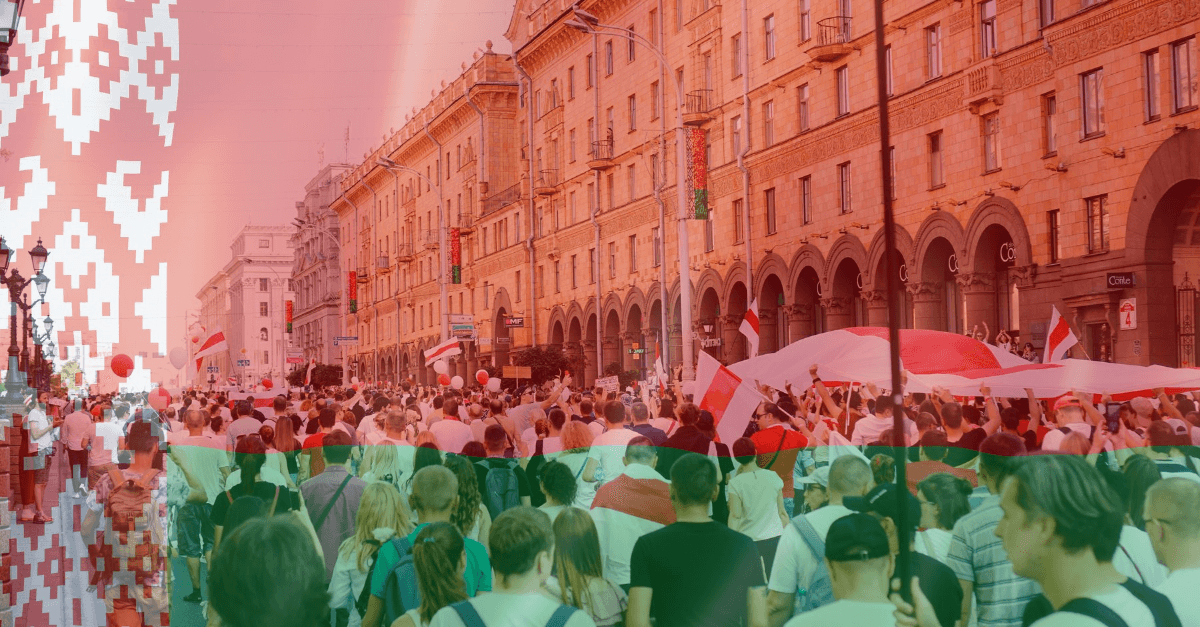Belarus has seen the largest protests in its history, a controversial presidential election, and pressure from Russia and the EU, causing major disruptions and threats of an economic collapse in Belarus. In addition, the crisis risks escalating into a geopolitical standoff between Russia and the West. To ease concerns and help your business prepare for continued volatility in the market, Director of Europe Research, Mark McNamee details his view on Belarus’ economy in H2 2020 and into 2021.
You can find a more in-depth analysis from Mark on the future for Belarus and what this new political era means for the country’s independence in his latest interview with CNBC.
Market Trends
Overall, GDP fell by just 1.6% YOY through July, though MNCs should prepare for extreme weakness the rest of the year as well as potential for interruptions in their route-to-market from the political crisis. The BYN fell dramatically from 2.4 to 2.7 (or by 13%) over the course of August, with more weakness coming. Drops in exports from striking factories and falls in investment from extreme uncertainty will weigh on the economy and incomes at least through the rest of the year.
Macroeconomic stability will be tested in the coming weeks as Belarus has some US$3 billion in external debt payments due but only US$8 billion in its reserves (2.5 months of import cover), which will be inadequate to support the currency and economy. Russia’s US$ 1 billion assistance in late August will help buy time but cannot stop a drastic economic contraction in the coming weeks.
Key Developments
Political tensions in Belarus are at their highest level in decades, following the August 2020 presidential election. Thousands have been arrested, with reports of tortures and killings, which has caused EU sanctions. Civil society and a stronger sense of Belarussian nationalism have been forged by the month’s events. Younger citizens have become more politically active as workers and the elderly have likewise turned on the Lukashenko regime, driving nationwide protests throughout the month. The political crisis has reached a stalemate as the protest movement has proven resilient, with the largest protests in history in late August, while Lukashenko has earned the support of the Kremlin to help repress the movement, if necessary. Looking ahead, Lukashenko has likely bought considerably more time in office, though not indefinitely, eventually leading to a political transition in some form.
The ongoing stalemate between Lukashenko and the opposition will over time further weaken the macroeconomic environment, raising the chances that this stalemate will be broken by the gradually accruing economic issues (e.g. debt payments, currency weakness, etc.) which may then involve Russia’s involvement for economic support and stability, for which Moscow would demand political concessions. In the most likely scenario, eventually a moment will come when enough people in Lukashenko’s circle (or the Kremlin) opt to seek an alternative path, whether stepping down or otherwise engaging with the opposition, which will seem less risky than holding onto power to an impending bitter end. – Mark McNamee, Director of Europe Research
On the business side, import prices are set to accelerate, while domestic demand slows amid extended uncertainty and the route-to-market is impacted. Firms should focus on more basic, core products in their portfolio as well as their distributors’ financial position in the coming months as costs rise and demand wanes.
The business environment today requires you to process information about your markets, industry, and company in real-time and translate the information to power business decisions. We are thrilled to launch a solution to solve this challenge. FrontierView Mobile puts the right information at the right time, at your fingertips! Visit FrontierView’s website to learn more about the mobile application and the complete FrontierView solution suite. Download the app for iOS or Android to start monitoring now.

